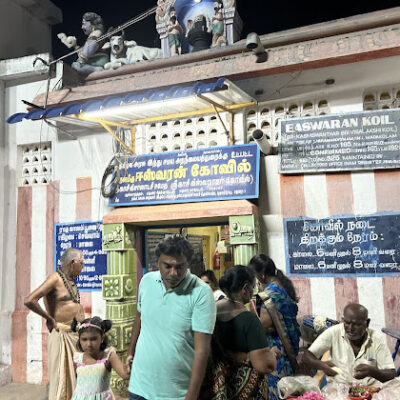Inwa Yedanasini Temple, Myanmar

Address
Inwa Yedanasini Temple, Myanmar
Yadana Hsemee Pagoda Complex,
Myanmar (Burma)
Moolavar
Buddha
Introduction
Yedanasini Temple (probably late 18th, early 19th centuries) is located on the west side of Inwa, one of the former capitals of the Konbaung Dynasty (1752-1885). While information on the origins of the temple is limited, it was probably founded (or last rebuilt) in the 1820s or 1830s during the reign of King Bagyidaw, as it is stylistically quite similar to the Me Nu Ok Kyaung built in 1818 by Nanmadaw Me Nu, the primary Queen of King Bagyidaw. It is possible that the same laborers worked on both sites.
Puranic Significance
The present buildings are in a ruined state as a result of a series of earthquakes that began on March 22, 1839, eventually resulting in the abandonment of the city and the transfer of the capital to nearby Amarapura in 1842. Despite the overall state of disrepair, the monastery includes certain picturesque elements such as the former lecture hall, a roofless chamber that contains a triad of Buddhas in good condition. On the west side of the hall are a series of windows beautifully decorated with zodiacal animals rendered in stucco, of which a rooster and lion are in the best condition. The design of the hall is strongly influenced by the architecture of Bagan, though the architects also used contemporary kyaung (wooden monasteries) as a model. This hybrid approach permitted the construction of large open halls (typical of wooden monasteries) while preserving architectural motifs derived from Bagan.
The end result—a brick assembly hall with multiple bays, spacious windows, and internal rounded columns—is thematically similar to Siamese assembly halls of the Ayutthaya era and later, suggesting that Thai viharn (assembly halls) may have served as an inspiration. While it is known that numerous Thai artisans were forcibly relocated to Burma following the fall of Ayutthaya in 1767, it is not clear if they (or their descendants) had a direct hand in the design of any of the temples at Inwa.
The other buildings on site include several pavilions with brick pyathat style roofs, again modeled on wooden monasteries of the period. A handful of stupas exhibit a strongly conical profile, a style that grew popular during the Konbaung period.











Century/Period
18th, early 19th centuries
Managed By
UNESCO World Heritage Site
Nearest Bus Station
Inwa
Nearest Airport
Yangon









